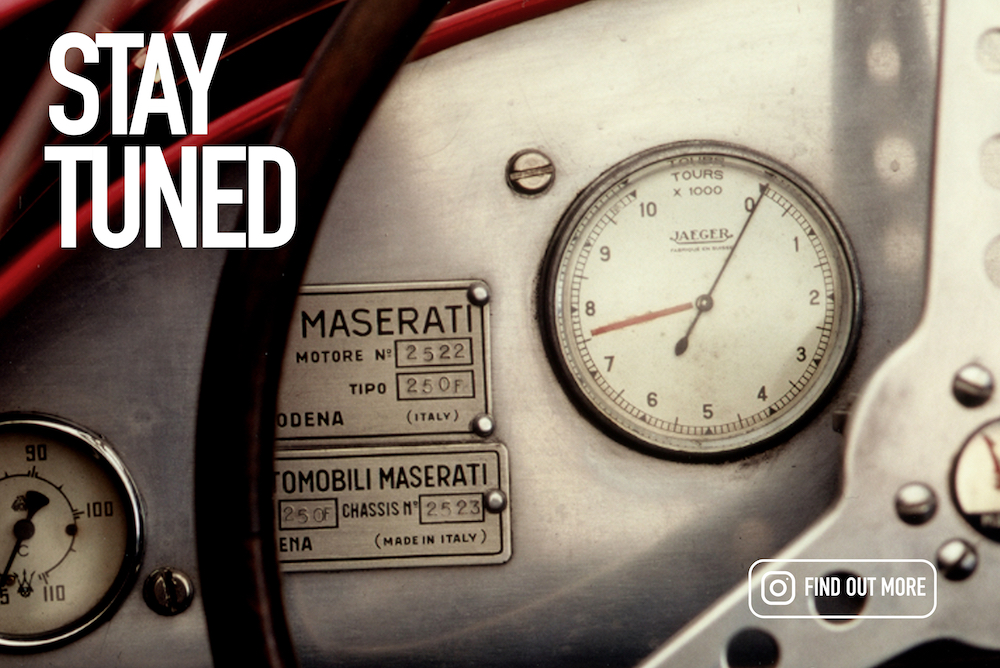In 1873, Christian Schmidt and Heinrich Stoll founded the company that would come to be called NSU. Now, more than 150 years later, many people would tell you that while NSU’s motorcycles were successful, its automotive contributions fell short. Many consider the flagship Ro 80 to be synonymous with engineering failure. However, in 2023, a group of Ro 80 enthusiasts took their cars on an epic journey from Germany to Morocco. In an act of reputational vengeance for Ro 80, all seven cars survived.
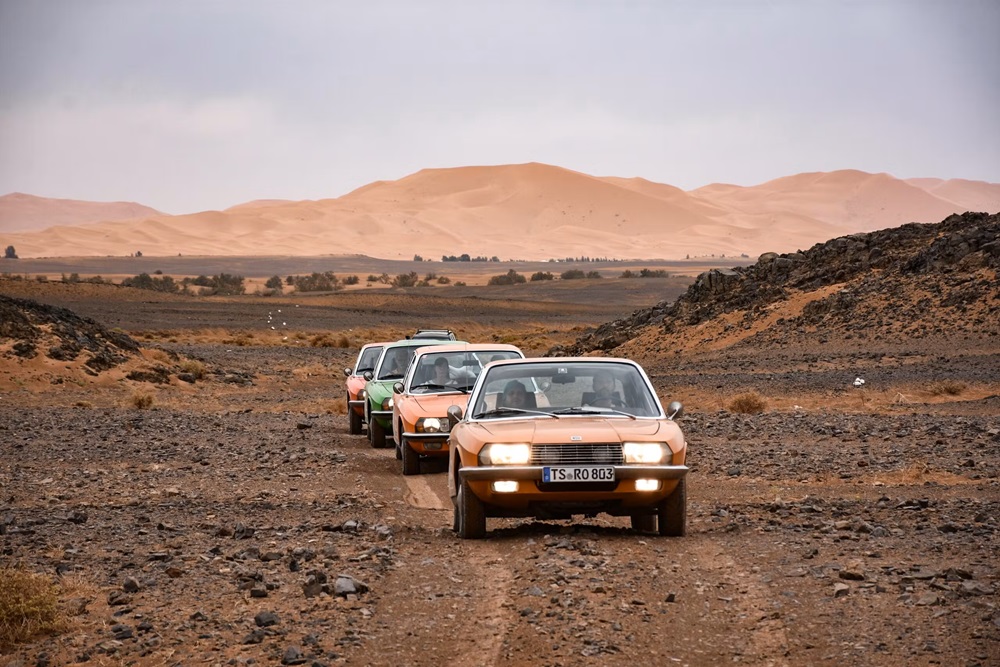
First, as a technology-heavy executive sedan, the Ro 80 was something of a departure for NSU. During the early 1960s, NSU was mostly building small, simple, rear-engined cars like the Prinz. The TT version of the Prinz was pretty sprightly (it’s the ancestor of the Audi TT), but NSU was more oriented toward making economy cars.
“NSU wasn’t ready for a car like the Ro 80,” says Axel E. Catton, a journalist who accompanied the Ro 80 owner’s club on their journey into the Sahara. “You can think of it like Volkswagen’s Phaeton.”

In 1964, NSU was the first company to build a production rotary-powered car, the Wankel Spider. It’s a pretty little convertible designed by Bertone, and you can draw a direct line from the Spider to the four-rotor scream of Mazda’s Le Mans–winning 787B endurance racer. NSU was the first to tame the rotary engine, and it later licensed its technology to Hiroshima.
Rotary is what the “Ro” in Ro 80 stands for. Launched in 1967, this sedan was cutting-edge technology, with front-wheel drive, a 113-hp twin-rotary engine, four-wheel disc brakes, fully independent suspension, and rack-and-pinion steering. The gearbox was as revolutionary as the motor, featuring three forward speeds and semi-automatic operation; instead of a foot pedal, moving the gearshift electronically disengaged the clutch.
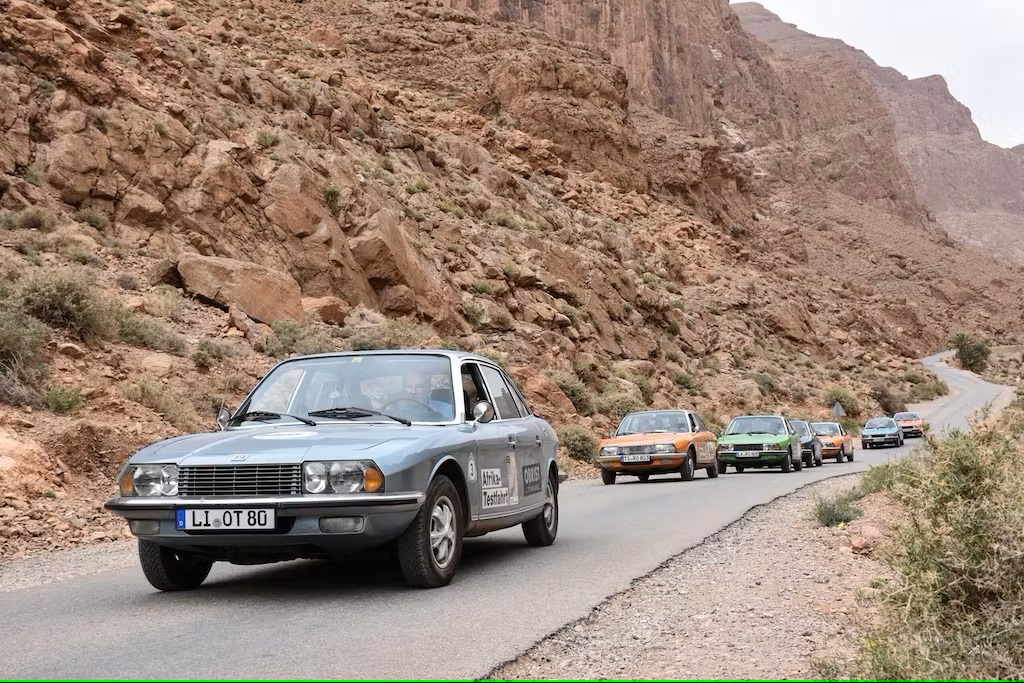
Perhaps the best part of the car was the design, sketched out in-house by NSU’s own Claus Luthe. Luthe would later work at BMW, creating the E28 5 Series and the E30 3 Series, the latter especially one of the great design triumphs in the German automotive sphere. The Ro 80 thus carries its styling with some authority, and it is both sleek and airy, with a large greenhouse yet an excellent drag coefficient for the time. It was voted Car of the Year by European journalists in 1968.
However, talk to any of the Mazda engineers who were working on rotary engine development in the 1960s, and the Ro 80 had a serious Achilles’ heel. In fact, according to Catton, it had two, as the operation of the gearbox was unfamiliar to most drivers and could be damaged with misuse.

When early Ro 80s began to suffer mechanical issues, there was still the chance to save the car’s reputation. But imagine being a dealership mechanic used to wrenching on a mechanically simple Prinz, and now you had to figure out what was wrong with a car that had no clutch pedal and no pistons. Enough public relations damage was done that in 1969 Volkswagen was able to launch a takeover of NSU, merge it with Auto Union’s just relaunched Audi, and that’s pretty much where most people close the book on the Ro 80’s story.
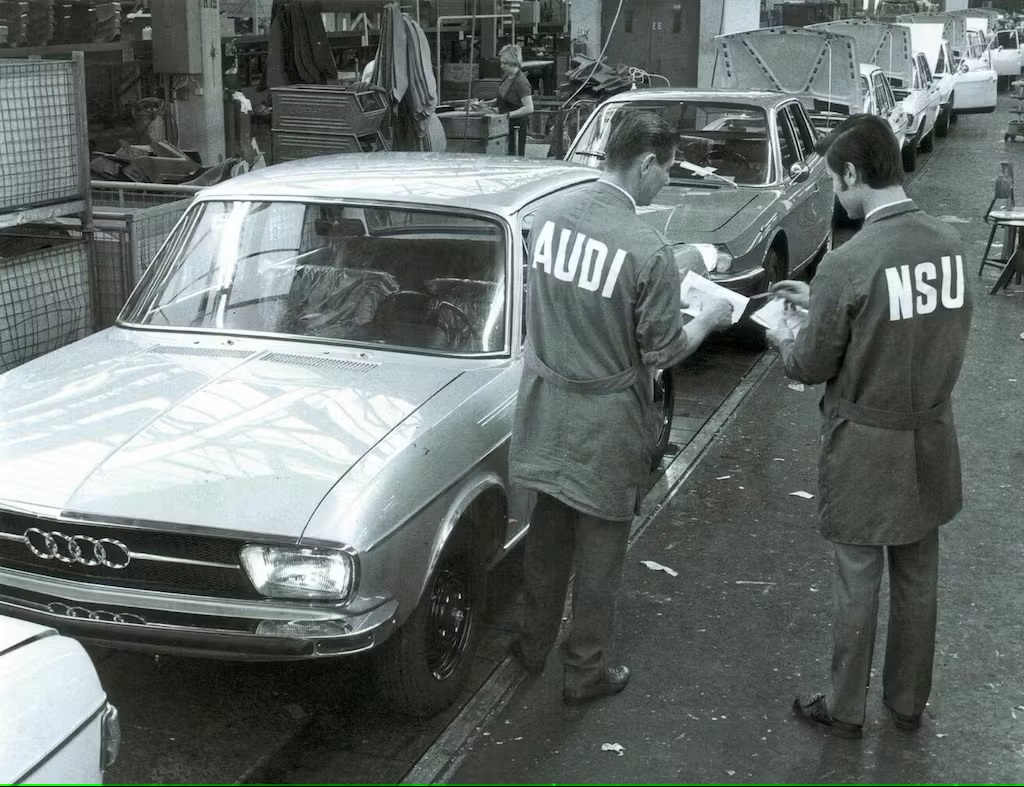
However, the Ro 80 was not just built for a couple of years and then abandoned. Instead, it was built for an entire decade, almost without any changes apart from cosmetic ones. Like Mazda, NSU soon sorted out the rotary engine’s reliability problems by focusing on the material used for the apex seals, and the cars were now largely as reliable as anything else out there.
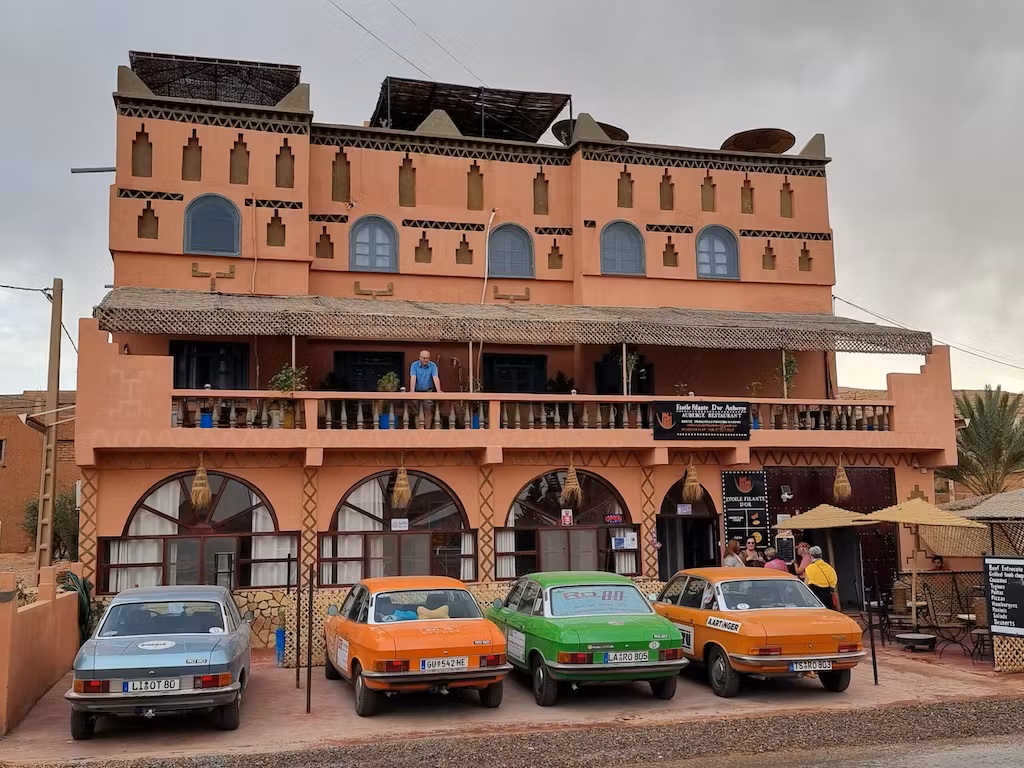
“Gunter [the president of Ro 80 Club International] called me up and said, ‘We’re going to Morocco, would you like to come?’ And I said yes, immediately, without any dates or details,” says Catton. “You only get these opportunities once in life.”
Driving any 50-year-old car through the Sahara seems crazy, let alone one that has a reputation for being one of the least reliable cars ever made. The Ro 80 club members are no fools, however—each carefully prepared their cars, packed necessary spares, and came prepared for roadside repairs. And, being German enthusiasts, there was a tremendous amount of technical knowledge spread out among the participants should something go wrong. But, as it turned out, the only car that broke down was a new Moroccan friend’s modern Dacia that was traveling with them for a day trip.

Photos from the trip are wonderfully evocative, the Ro 80s lined up in their ’60s and ’70s colors, palm trees and camels and red sands in the background. The idea was to recreate a trip done in-period by the German magazine hobby, which Catton says was similar to Popular Mechanics. That story was filled with technical details and extended over several issues. The modern club trip spent eight days traipsing around Morocco, from the center of Casablanca to the 7234-foot Tizi n’Tichka pass in the Atlas mountains to the sands of the Sahara itself. The oldest car on the trek was a 1968 model, from the same year that the Hobby article was published.
“Twelve years ago, I wanted a classic car that was different from all the others and which very much represented the slogan ‘Vorsprung durch Technik,’” [Advancement through technology] says Gunter Olsowski. “The progressive shape, the innovative drive concept with the rotary engine, and the myth surrounding the Ro 80 were also decisive factors for me.”

He seems unsurprised by the largely trouble-free expedition. “All of my three Ro 80s have always been very reliable so far. This was also the case on our trip to Morocco. Small things can be repaired immediately. Ride comfort was excellent throughout the entire trip, whether on the highway or on desert tracks.”
“I became a fan of the Ro 80 very much by chance,” says Brigitta Kolland, one of two female Ro 80 owners on the expedition. “The car actually ‘found me’ as I didn’t know this brand before. I now own, drive, and love my car and know more technical details than I ever thought I would.
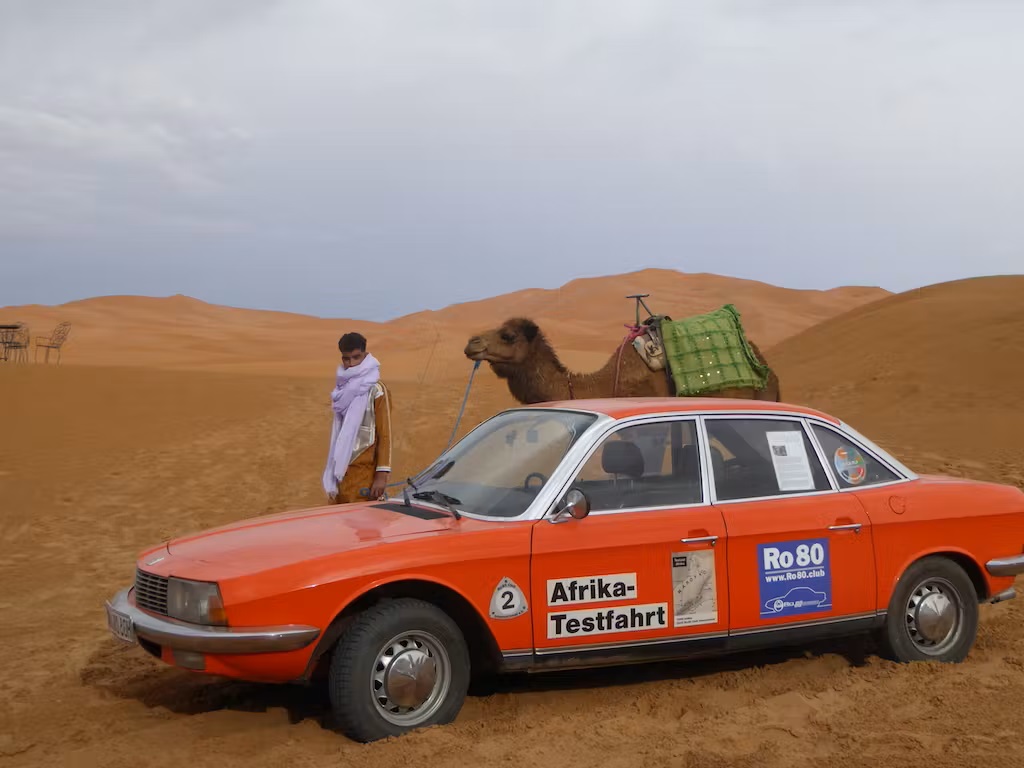
“The trip to and through Morocco confirmed once again that trusting an ‘old’ car is totally alright. We could also see that with the cars of our fellow travelers—planning is all good and important, but the rest is trust and certainly also luck. My husband and I have already managed a great many trips with the Ro 80.”
Olsowski adds that prices for the Ro 80 are still very affordable, so it’s a classic that is within reach. Further, owners tend to be curious about the technical parts of the car, and there’s no elitism in the club.
“I first learned about the Ro 80 thirty years ago, when I saw one in a book called Lemons: The world’s worst cars,” says Jaime Kopchinski of Classic Workshop, “I thought it looked so cool—I knew I had to have one.”

Kopchinski says he has only ever seen one Ro 80 in person, and it’s the one he found and bought locally a few years ago. However, he also says that thanks to the active German club, parts availability and pricing are surprisingly reasonable, far cheaper in many cases than the classic Mercedes parts he’s continually ordering. For instance, his Ro 80 had long ago been fitted with the market headlamps; the German Ro 80 club had a replacement Euro set available, brand new.
“It’s a surprisingly fast car,” Kopchinski adds. “Not 0 to 60, but 80 miles per hour is nothing to it. It just wants to go quicker than the speed limit.”

Everything you could potentially want in a classic car is present in the Ro 80. It’s rare, but not so valuable that you won’t drive it. It was groundbreaking at the time and boasts a noble design lineage. By all reports, it’s a great long-distance car, with excellent high-speed stability on the highway and solid comfort on some pretty rudimentary roads. Over the trip, the average fuel economy was around 17–18 mpg, with the rotary engine requiring oil top-ups every 600 miles or so.
The Ro 80 Club International did not set out to repair the reputation of their beloved sedans. Rather, it simply set out on a magnificent adventure based on a shared enthusiasm for a special and obviously misunderstood car. The group trusted its Ro 80s, and the cars faithfully brought them into the desert and then back out. What more could you ask of a classic?
Photo Credit: Axel E.Catton /Audi – Report by Brendan McAleer
find more news here…
